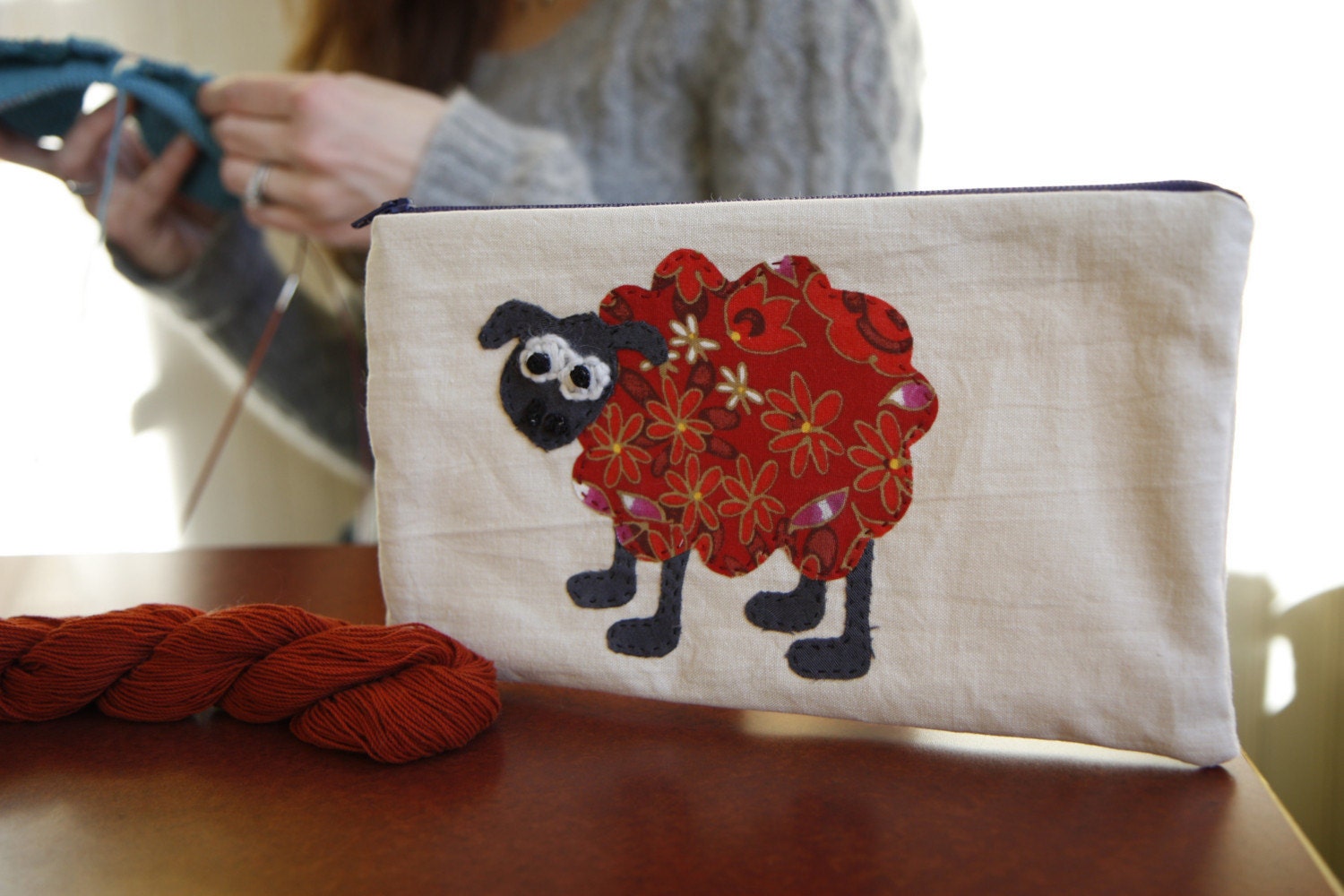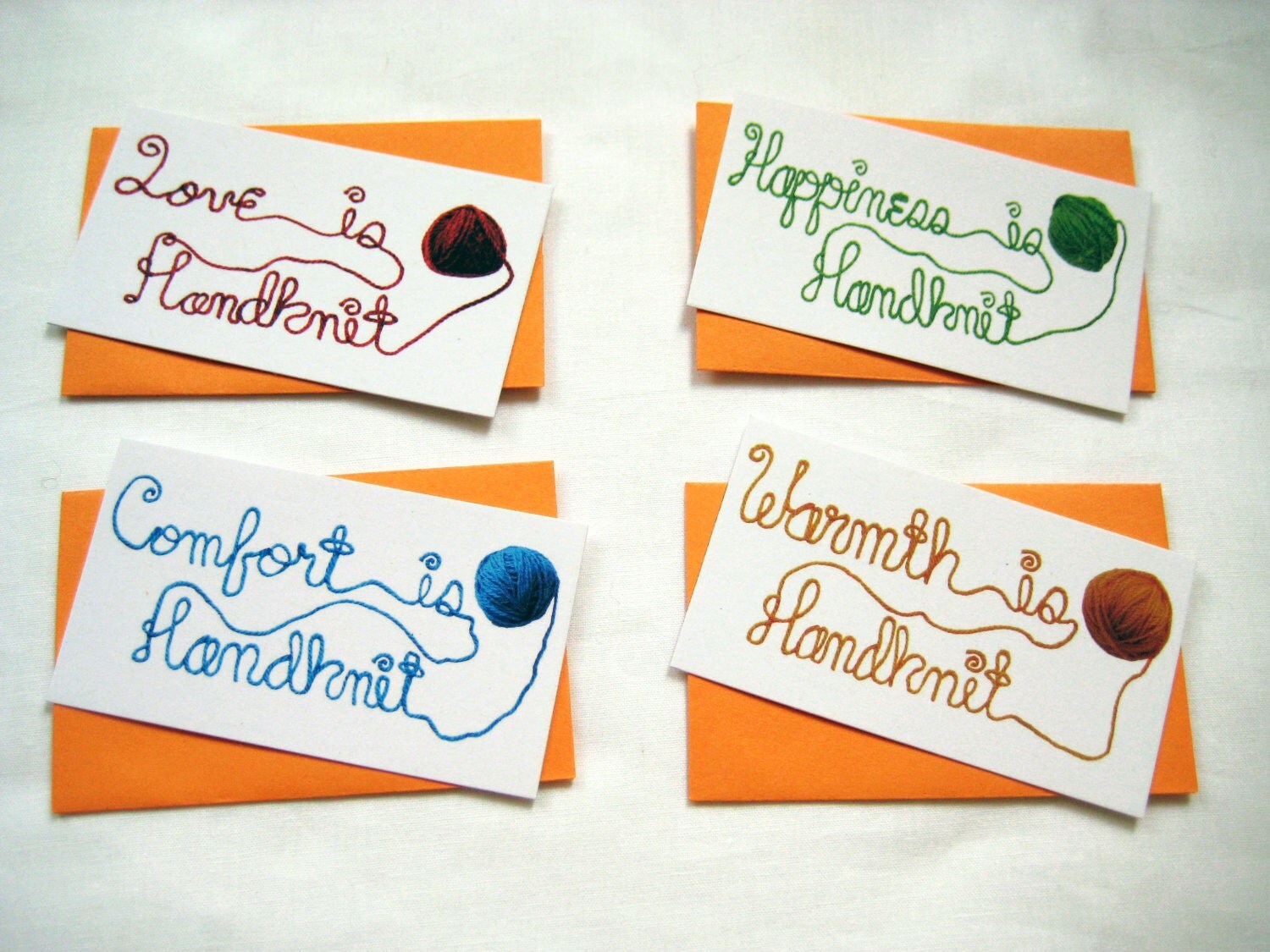In the last post we talked about why you might want to substitute yarn; in this one we’ll talk about how. There are a few things to keep in mind when choosing a new yarn for your project - weight, texture, ply, and fiber characteristics - that’ll help make your selection a success. Once you’re confident in your yarn knowledge you’ll be able to let your imagination and creativity run wild when personalizing your next knitting project.
Weight
Even if you’re new to knitting you’ve seen that yarns come in different thicknesses or weights (the Craft Yarn Council provides a standard weight guide). The weight of your yarn has a lot to do with the finished look of your project. A lace or fingering yarn will give you a fine knitted garment, while bulky yarn will give you a bulky garment. When substituting yarn it’s important to choose a weight similar to the one called for in the pattern. If you stray too far from the original your gauge will be off, leaving you with an ill-sized finished object.
When I substitute yarn I look to the weight in grams or ounces and yardage to make sure my new yarn is a good fit for the old. For example, when I was selecting a replacement yarn for Louisa Harding’s La Salute, a mohair, nylon blend (25g/115 yards) I found Classic Elite’s Giselle, a mohair, nylon, wool blend (50g/230 yards). Giselle has the same yardage per weight - 25g/115 yards or 50g/230 yards - as La Salute. As long as your yardage per weight is exactly the same or very similar to the yarn called for you should be good.
Leigh Dudenhoeffer of Frozen Tundra Fiber Arts has this advice, “When I want to substitute yarns, I take several wpi (wraps per inch) measurements of the needed yarn, figure the average of it and bring my ruler with me to get exactly what I need. I do this because everybody’s different when it comes to measuring wpi; some do it up tight and some like do it loosely. I’m right in the middle. Yes, I ask permission of the owner of the yarn shop or vendor before I sample wpi.”
Wraps per inch is a measurement used by spinners and adapted by knitters to determine weight measurement. To measure wpi you can use a ruler or a pencil. Mark one inch, wrap the yarn so that each wrap butts up to the last and count the wraps. Substitute a yarn that has the same number of wraps per inch and you should get the pattern’s gauge. If you like this method, support an artisan and get girlontherocks adorable sheep wpi gauge.
After you’ve selected your new yarn it’s important to do a gauge swatch to ensure the new yarn will work for your project. A proper gauge swatch should be knit, washed, and blocked as you would your finished object. I understand it’s frustrating and time consuming to complete a gauge swatch, but I can tell you it’s even more frustrating spending hours knitting and your finished project coming out the wrong size (guilty!). If after swatching you find you are getting too many stitches per inch go up a needle size, if you are getting too few stitches per inch go down a needle size. If it’s just not working you have two options - 1. Select a new yarn or 2. Redo the math of the pattern at the gauge you like.
Texture
Yarn can be fuzzy like mohair and angora and it can be smooth like superwash merino. It can be bumpy like boucle or flat like ribbon. It can have eyelashes, beads, sequins or tweedy nubs. These textural elements can have a real effect on the look of the finished object. Select the right yarn for the look that you are trying to achieve. If you’re knitting an aran sweater with lots of cables and purl designs boucle yarn is the exact wrong yarn to use- you won’t see any of the design elements. Sometimes though, choosing a yarn with a different texture than the pattern calls for can lead to amazing results. Let’s return to Angela Rangel’s cropped cardigan from the last post. Instead of using fuzzy mohair she chose a smooth superwash merino wool. The stitch definition of the all over lace pattern came to life with her yarn selection.
 |
| The Original |
 |
| Andrea Rangel's Version |
Ply
Occasionally yarns will list a ply, or the number of strands that make up the yarn, on the ball band (i.e. 2-ply, 3-ply, 4-ply). The thickness of the wool doesn’t have to do with the number of plies, but of the thickness of each ply. You can have 4-ply lace weight and single-ply bulky weight yarn. The more strands that are plied together, the stronger the yarn and finished object will be (think cables that hold up a suspension bridge).
Ply becomes important when you think about the use of your object. If the object will be used frequently or receive a lot of friction a higher ply is better. If the yarn you are selecting does not tell you its ply you can determine it. Hold an inch of the yarn between your two thumbs and first fingers and twist it until the strands separate. Count the individual strands to establish its ply.
Fiber Characteristics
Designers have a strong understanding of fiber. They know that alpaca will drape beautifully, that wool will give structure, and that bamboo’s soft, durable, machine washable nature is great for babies. Designers are very deliberate in the fiber they choose for a project; drape, stiffness, stitch definition, elasticity, stretch, function, seasonal wearibilty, and durability all come into play when choosing yarn for a design. A knowledge of fiber characteristics will help you choose the best yarn substitution that has similar features to the yarn called for.
Fiber can be broken down into three categories: animal, vegetable, and synthetic. Often times yarn manufacturers will blend fibers to get the best characteristics of each. For example, vegetable based yarns like cotton are known to be inflexible. Yarn manufacturers often blend cotton with nylon or elastic to make it more resilient. While I’m a big proponent of knitting with natural fibers sometimes synthetic blends are actually a better fit- I’m thinking of knitting for babies and children. Mothers don’t always have the time to handwash so be kind and use something machine washable. If you want to go the natural route, substitute superwash wool for regular.
Animal
Alpaca - (origin: alpaca fleece) fine, soft, lustrous, slight halo, very insulative, light, lofty, drapes beautifully, non-resilient, nonallergenic, little to no lanolin
Angora- (origin: angora rabbit) fuzzy (strong halo), soft, lustrous, lofty, insulative, lacks lanolin, tendency to shed
Cashmere - (origin: cashmere goat) fine, soft, slight halo, drapes beautifully, very insulative, less durable than wool, tendency to pill, difficult to felt
Llama - (origin: llama fleece) coarser than alpaca, but still very soft, slight halo, very insulative, durable, lighter than wool, nonallergenic, little to no lanonlin
Mohair - (origin: angora goat) fuzzy (strong halo), insulative, less resilient than wool, drapes beautifully, can feel scratchy
Qiviut - (origin: muskox) lightweight, softer than cashmere, very insulative, durable, slight halo
Silk - (origin: silk worm cocoons) fine, soft, smooth, lustrous, drapes beautifully, poor elasticity, insulative, strong; tussah silk is more rustic and coarser.
Wool - (origin: sheep fleece) can be smooth or have a slight halo, resilient, insulative, strong, durable, contains lanolin, absorbs water but only feels wet after absorbing 34% of its original weight, can feel scratchy
Vegetable
Bamboo - (origin: bamboo stalks) soft, durable, antibacterial, highly absorbent, non-resilient, lustrous, often machine washable, great for summer knits
Cotton - (origin: cotton boll) soft, durable, absorbent, non-resilient, dull (although when mercerized it is lustrous), often machine washable, great for summer knits
Hemp - (origin: outer layers of hemp plant) strong, durable, insulative, absorbent, breathable, non-resilient, often machine washable, great for summer knits
Linen - (origin: stem of flax plant) strong, sturdy, durable, breathable, heavy, non-resilient, often machine washable, great for summer knits
Synthetic
Nylon/Polyester/Acrylic/Polymade (origin: petroleum) light, strong, resilient, non-insulative, not breathable, lustrous, can have a halo, often machine washable, usually added to other fibers to make them more elastic
Rayon/Viscose - (origin: regenerated cellulose of wood chips or cotton lint) soft, lustrous, non-resilient, often machine washable
A last note on yarn substitution. Ravelry is an amazing resource when it comes to seeing projects knit in substituted yarns. If you aren’t sure what yarn you should choose for a project but know that you want to use something other than what’s called for check out the project’s finished objects page. With all of the user photos you’re bound to find something you like.
Read Part 1
Resources:
Fournier, Jane and Nola Fournier. In Sheep’s Clothing: A Handspinner’s Guide to Wool. Loveland, CO: Interweave, 1995.
Greco, Kathleen and Nick Greco. The Knitter’s Guide to Combining Yarns. Lafayette, CA: C&T Publishing, 2007.
MacKenzie McCuin, Judith. The Intentional Spinner: A Holistic Approach to Making Yarn. Loveland, CO: Interweave, 2009.
Righetti, Maggie. Knitting in Plain English. New York: Thomas Dunne Books, 2007.
Zimmermann, Elizabeth. Knitting Without Tears. New York: Fireside, 1995.



















































